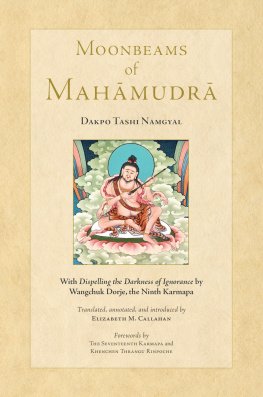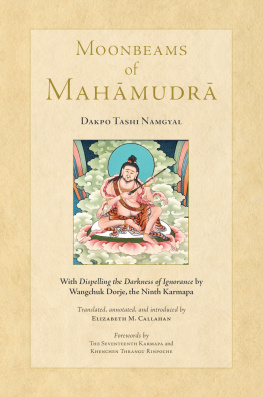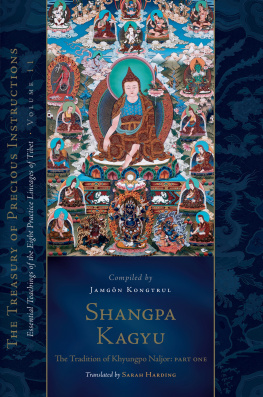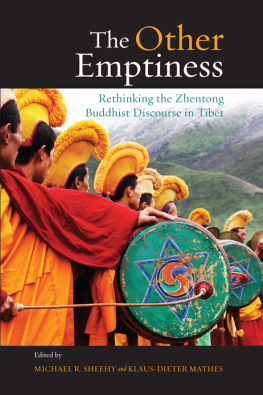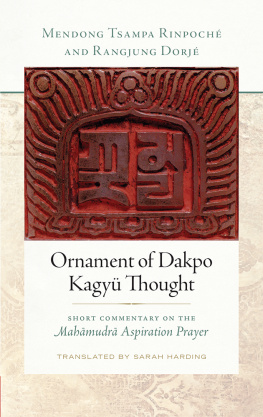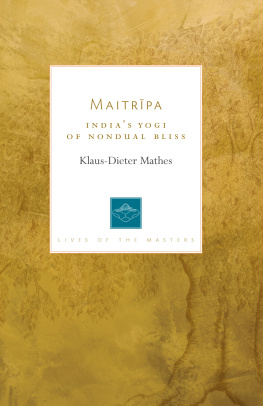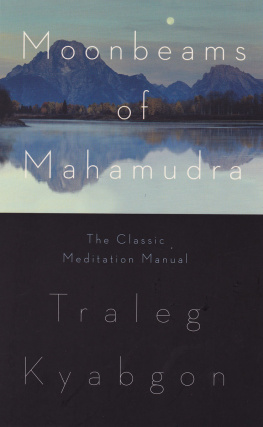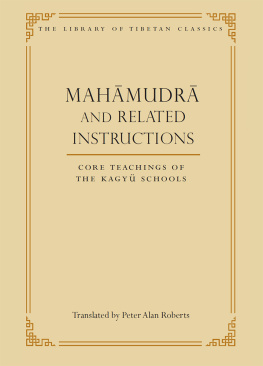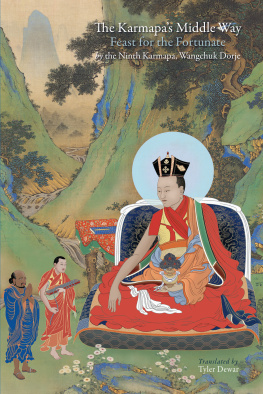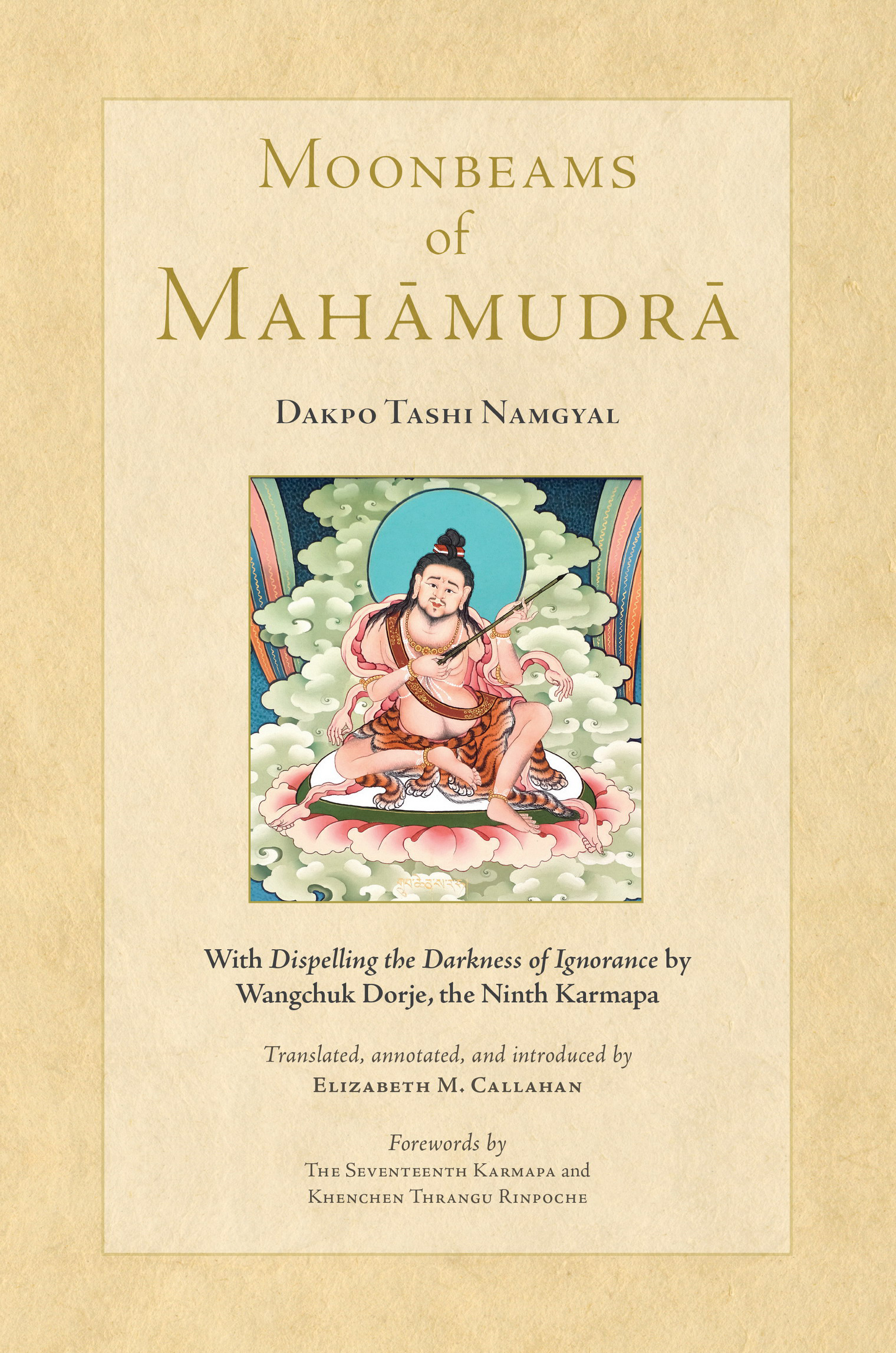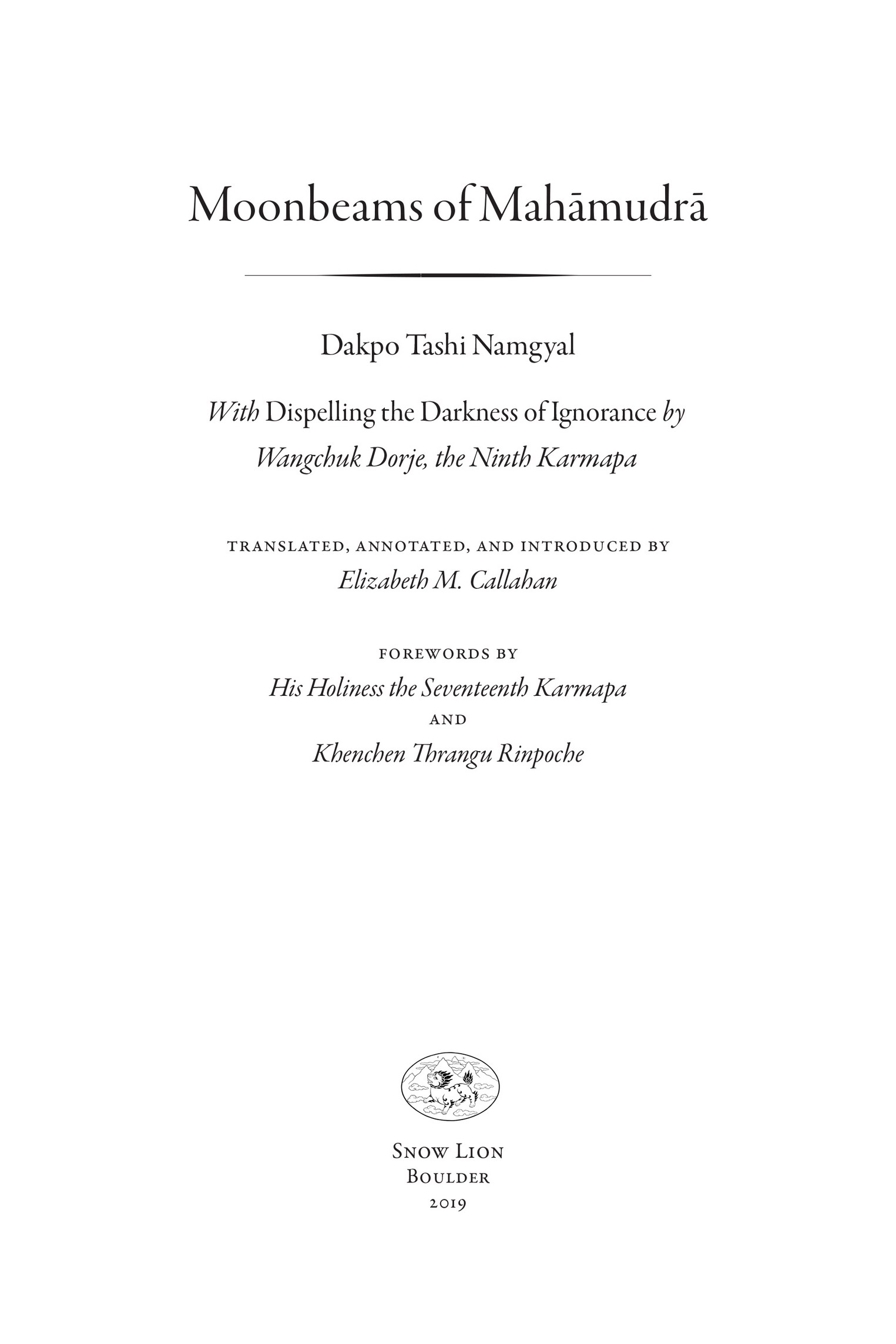Contents
Landmarks
Print Page List
T HE T SADRA F OUNDATION S ERIES
published by Snow Lion, an imprint of Shambhala Publications
Tsadra Foundation is a U.S.-based nonprofit organization that contributes to the ongoing development of wisdom and compassion in Western minds by advancing the combined study and practice of Tibetan Buddhism.
Taking its inspiration from the nineteenth-century nonsectarian Tibetan scholar and meditation master Jamgn Kongtrl Lodr Tay, Tsadra Foundation is named after his hermitage in eastern Tibet, Tsadra Rinchen Drak. The foundations various program areas reflect his values of excellence in both scholarship and contemplative practice, and the recognition of their mutual complementarity.
Tsadra Foundation envisions a flourishing community of Western contemplatives and scholar-practitioners who are fully trained in the traditions of Tibetan Buddhism. It is our conviction that, grounded in wisdom and compassion, these individuals will actively enrich the world through their openness and excellence.
This publication is a part of the Tsadra Foundations Translation Program, which aims to make authentic and authoritative texts from the Tibetan traditions available in English. The Foundation is honored to present the work of its fellows and grantees, individuals of confirmed contemplative and intellectual integrity; however, their views do not necessarily reflect those of the Foundation.
Tsadra Foundation is delighted to collaborate with Shambhala Publications in making these important texts available in the English language.
Snow Lion
An imprint of Shambhala Publications, Inc.
4720 Walnut Street
Boulder, Colorado 80301
www.shambhala.com
2019 by Tsadra Foundation
The maala offering verse on was translated by the Nalanda/Vajravairochana Translation Committee under the direction of Chgyam Trungpa Rinpoche and used by special permission. Copyright 1976, 1990 by Diana J. Mukpo and the Vajravairochana Translation Committee. All rights reserved.
All rights reserved. No part of this book may be reproduced in any form or by any means, electronic or mechanical, including photocopying, recording, or by any information storage and retrieval system, without permission in writing from the publisher.
Cover art: Saraha. Detail from Marpa Kagyu Practice Lineage thangka, gift of Eric Colombel
Photo credit: Rafael Ortet, 2018 Eric Colombel and Tsadra Foundation
Cover design by Tsadra Foundation.
L IBRARY OF C ONGRESS C ATALOGING - IN -P UBLICATION D ATA
Names: Bkra-is-rnam-rgyal, Dwags-po Pa-chen, 1512 or 15131587, author. | Callahan, Elizabeth M., author. | Dba-phyug-rdo-rje, Karma-pa IX, 1556approximately 1603. Phyag chen zla bai od zer. English.
Title: Moonbeams of Mahmudr / Dakpo Tashi Namgyal; with Dispelling the Darkness of Ignorance by Wangchuk Dorje, the Ninth Karmapa; translated, annotated, and introduced by Elizabeth M. Callahan.
Other titles: Phyag chen zla bai od zer. English
Description: First edition. | Boulder, Colorado: Snow Lion, an imprint of Shambhala Publications, Inc., 2018. | Series: The Tsadra foundation series | Includes bibliographical references and index.
Identifiers: LCCN 2017058949 | ISBN 9781559394802 (hardcover: alk. paper)
eISBN 9780834842113
Subjects: LCSH : MeditationBuddhism. | amatha (Buddhism) | Vipayan (Buddhism) | Mahmudr (Tantric rite) | Bkra-is-rnam-rgyal, Dwags-po Pa-chen, 1512 or 15131587. Phyag chen zla bai od zer. | Dba-phyug-rdo-rje, Karma-pa IX, 1556approximately 1603. Phyag chen zla bai od zer.
Classification: LCC BQ 5612 . B 57 2018 | DDC 294.3/420423dc23
LC record available at https://lccn.loc.gov/2017058949
v5.4
a
For Khenchen Tsltrim Gyamtso Rinpoche: the guru of the profound view and sublime yogic manifestation, with gratitude
F OREWORD
H IS H OLINESS THE S EVENTEENTH K ARMAPA
Mahmudr is the practice at the heart of all Kagyu traditions. Brought to Tibet directly from India by the great Kagyu forefather Marpa the Translator and practiced by his disciple Jetsun Milarepa, it then flourished under Lord Gampopa.
This practice very much emphasizes working with the mind. The stages of the mahmudr path in this tradition are known as the four yogas: one-pointedness, freedom from elaborations, one taste, and nonmeditation. All of the stages of the paths and bhmis are explained through the condition of your mind. Ultimately, this brings about a direct connection between you and the nature of your mind.
This book contains fresh translations of two of the most important texts in the Kagyu mahmudr tradition. Although the first text, Moonbeams of Mahmudr by Dakpo Tashi Namgyal, was composed in the sixteenth century, it is still regarded as the definitive guide to mahmudr, providing the blueprint for the practice itself and also clearly explaining the scriptural authority and logical reasonings that support the practice.
The second text, Dispelling the Darkness of Ignorance, is the medium-length part of the Ninth Karmapa Wangchuk Dorjes mahmudr trilogy, a comprehensive text full of practical instructions which complements Tashi Namgyals.
I should like to thank the translator, Elizabeth Callahan, who has invested so much time and effort in this work. She has researched the material extensively and has been able to draw on many years of practice under the guidance of Khenchen Tsultrim Gyamtso and Khenchen Thrangu Rinpoche.
Finally, it is important that anyone reading this text bears in mind that it is a highly regarded practice book, through which many people have attained direct realization, and, as such, is not to be treated lightly. It is my aspiration that all who read it will be inspired to follow the mahmudr path practiced by these great masters diligently.
Seventeenth Karmapa, Ogyen Trinley Dorje
New York
August 5, 2018
F OREWORD
K HENCHEN T HRANGU R INPOCHE
These days the special short path of Secret Mantra, Vajrayna, with its unbroken continuum of instructions, is famous for mahmudr and dzog-chen. Of those, the sacred dharma of mahmudr has come down through a long lineage and a short lineage.
The teacher Vajradhara taught, in general, an infinite number of *niruttara tantras and, in particular, the tantras of the ultimate essence: the Mahmudr-tilaka, the glorious Tantra on the Unsullied, and others. Vajradhara transmitted these teachings to the bodhisattva Ratnamati, who taught the Great Brahman Saraha, the forefather of all the mahsiddhas in the Noble Land [India]. Saraha instructed the supreme, glorious Ngrjuna, and the transmission continued. That is the long lineage.

